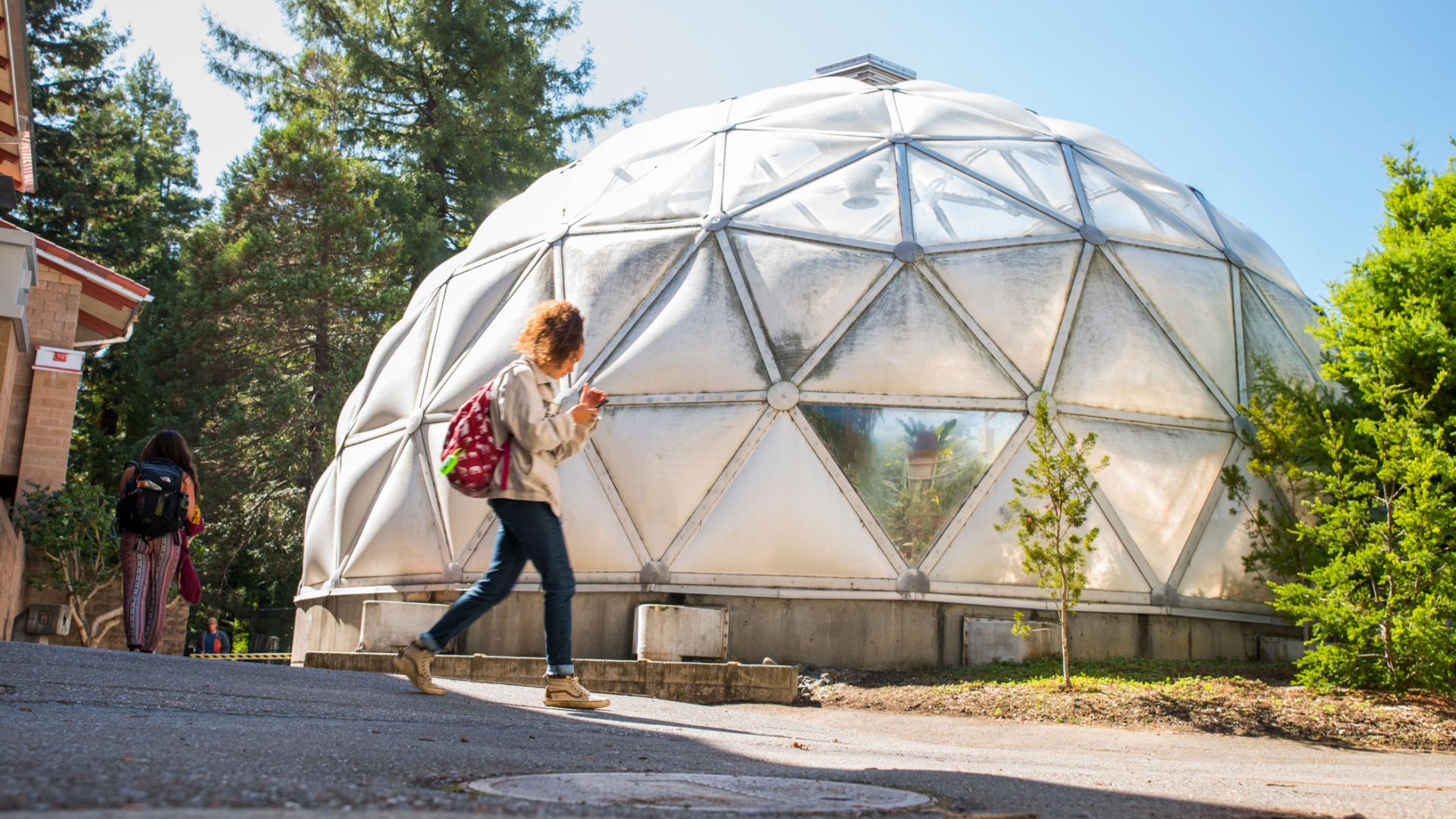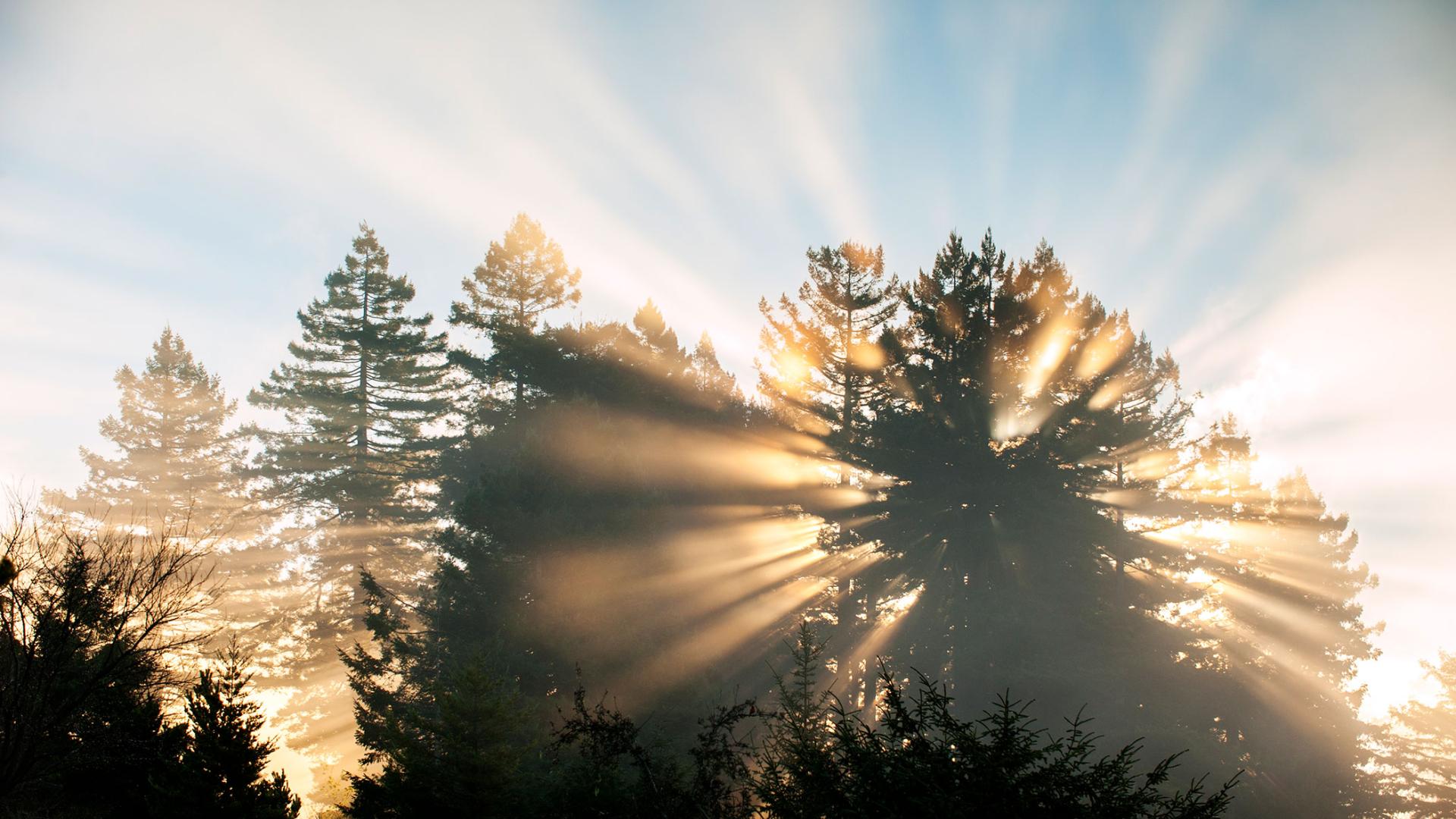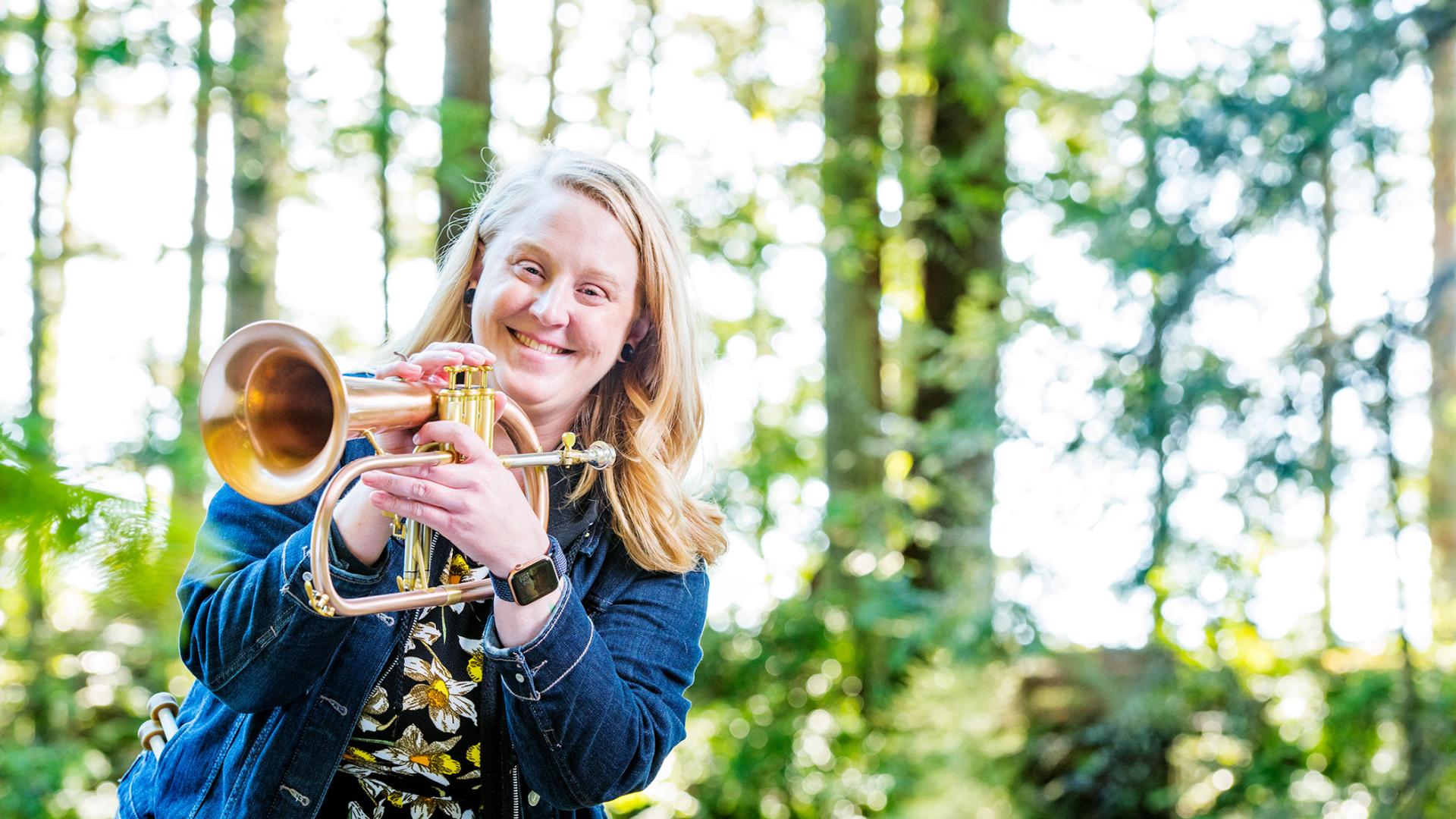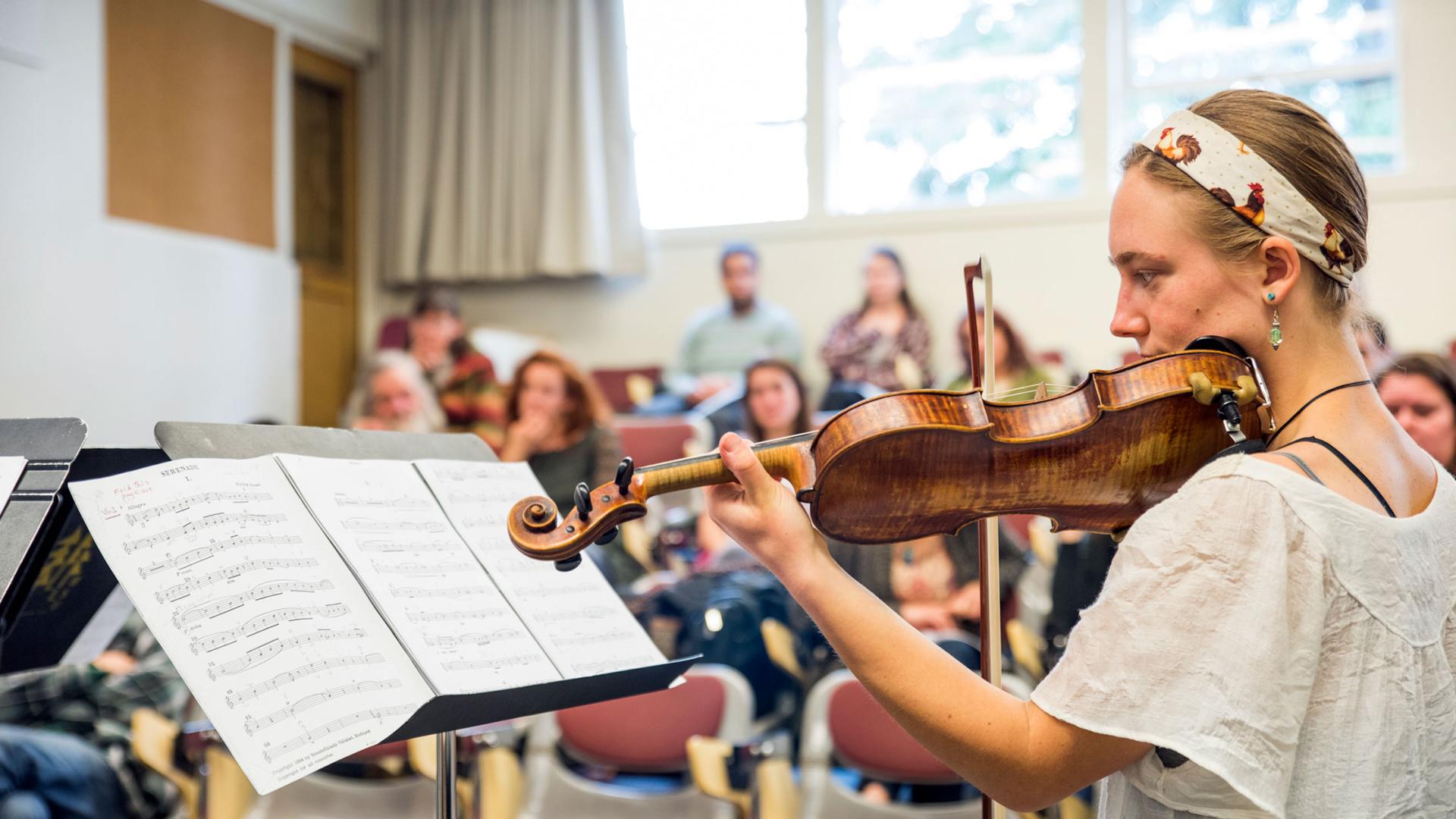Breadcrumb
Achievements
Publications and achievements submitted by our faculty, staff, and students.
Erin Kelly
Forestry, Fire & Rangeland Management
Assistant Professor Erin Kelly of the Forestry Department is working with researchers at the US Forest Service Pacific Northwest Research Station to find ways to help forest landowners conduct fuels treatments at large scales and across ownership boundaries to improve fire resilience. Dr. Kelly received $100,000 from the US Forest Service to support the work, which started with documenting known large-scale, cross-boundary fire restoration projects, then choosing case studies across Oregon and Washington. Jodie Pixley, a student in the HSU Environment and Community Master’s program, spent her summer in the Klamath Basin and Ashland, Oregon, working on two case studies.
David Greene, Jeff Keane & Melanie McCavour
Forestry, Fire & Rangeland Management
David Greene and Jeff Kane of the Department of Forestry and Wildland Resources and Melanie McCavour of the Department of Environmental Science and Management have just been awarded a 10-year $800,000 grant from the Bureau of Land Management for a study of Baker Cypress. This tree species, restricted to a few populations in northern California and southern Oregon, has seeds retained in cones that will only open when burned and the continuation of fire exclusion is strongly contributing to its potential extinction. The purpose of the grant is to better understand the reproductive ecology of Baker Cypress, determine the feasibility of using prescribed fire and other treatments to inform the restoration and management of this species, and create the Environmental Impact Report that will underpin the management plan.
Erin Kelly
Forestry, Fire & Rangeland Management
Erin Kelly, Assistant Professor in the Forestry & Wildland Resources Department, and Jonathan Kusel, Executive Director of the Sierra Institute for Community and Environment, had their article on cooperative, cross-boundary management facilitates large-scale ecosystem restoration efforts published in _California Agriculture_, Volume 69, Number 1, January-March 2015. This article summarizes a case study for the Burney Gardens timber harvesting plan where a cooperative, cross-boundary meadow restoration project was undertaken by private & corporate landowners in Eastern Shasta County. The Burney Gardens property is currently under consideration for donation by the Pacific Forest and Watershed Lands Stewardship Council to the University as a teaching and research working laboratory of Northern Sierra Mixed Conifer forests with a large meadow complex.
Sara Hanna and Ken Fulgham
Forestry, Fire & Rangeland Management
Research by the Department of Forestry and Wildland Resources faculty was recently featured in a special issue of _California Agriculture_, a quarterly journal of peer-reviewed research from the University of California Division of Agriculture and Natural Resources. The issue titled, _Forestry: Managing for the Future_ highlights a wide range of forestry related research being conducted in California.
Sara Hanna and Ken Fulgham, Lecturer and Emeritus Professor respectively in the Forestry & Wildland Resources Department, had their article on Post-fire vegetation dynamics of a sagebrush steppe community change significantly over time published in California Agriculture, Volume 69, Number 1, January-March 2015. The article summarizes almost 30 years’ worth of data collected on two prescribed wildland fire sites in the Clear Lake Hills area of Modoc County. Significant findings regarding the post-fire plant community trajectories and changes over time have management implications for domestic livestock grazing, interstate mule deer herd winter range use, and the provision of suitable habitat for the threatened Sage Grouse (_Centrocercus urophasianus_).
Crystal Welch, Andrew Longman, Tyler Hanson and Robin Halloran
Forestry, Fire & Rangeland Management
Three Humboldt State University students passed the rigorous “Fundamentals of Soil Science” exam offered April 17, 2015 becoming Associate Professional Soil Scientists, according to test results from the Council of Soil Science Examiners. Crystal Welch, Andrew Longman and Tyler Hanson were among five individuals in California who attempted the exam this spring and were the only California examinees to pass the exam. Nationally, 61 individuals took the exam with a pass rate of 59% overall according to Michele Lovejoy, Program Manager for Professional Development of the Soil Science Society of America.
Crystal Welch graduated in Fall 2014 with a degree in Rangeland Resource Science (Wildland Soils option). After performing lab analysis of soils for Dirty Business Consulting in Arcata, Crystal starting working as a field scientist for the Great Basin Institute in Reno, Nevada. Andrew Longman graduated Spring 2014 with a degree in Rangeland Resource Science (Wildland Soils option) and will soon begin a position as Junior Specialist for Organic/Conventional Farming Project with Dr. Louise Jackson at U.C. Davis. Andy will help study the effects of water deficits on crop physiology, biology and pests. Tyler Hanson has completed his minor in Wildland Soil Science, and will graduate in Fall 2015 with a degree in Botany. Robin Halloran, another Wildland Soils option graduate (Spring 2015), passed the same exam November 21, 2014. In summary, 16 out of 23 HSU students who have attempted the exam have passed (70%) since 2011, well above the national average pass maximum of 63% for the same time period.
Those who pass the fundamentals exam will be eligible to take the Professional Practice exam after five years of professional experience, an additional step in becoming a Certified Professional Soil Scientist. Recent Soil Science Society of America (SSSA) discussions about program self-certification have included the fundamentals exam as one indicator of program quality. Given that the exam is multiple choice, it does not evaluate students’ field skills per se, but is an exam that is offered nationwide and is therefore ‘portable.’ Humboldt State University Wildland Soils students (an option under the Rangeland Resource Science major) spend more than 200 hours in field or laboratory learning experiences, honing hands-on skills and field judgment of soil properties, limitations, and capabilities.
Andrew Bryant, Matt Prendergast, Andrew Longman, Christina Cortez, Tyler Hanson, Kathleen Dondero, Alicia Goodman, Henry Ayres, and Ariel De Lara
Forestry, Fire & Rangeland Management
The HSU Range Plant Identification Team competed in the 2015 Society for Range Management plant identification exam located in Sacramento, Calif., in February. The competition involves the sight identification of 200 grasses, forbs, shrubs and trees to species. The HSU Plant Team placed 6th out of 23 schools hailing from Canada, Mexico and United States. The University of Alberta placed first, followed by Texas A&M, Universidad Autonoma Agraria Antonio Narro, Utah State University, Universidad Autonoma de Chihuahua, and HSU, respectively. Advanced Rangeland Plants (RRS 475) prepares students for the annual exam and in preparation for related field work.
Jeffrey Kane
Forestry, Fire & Rangeland Management
Assistant forestry professor Jeffrey Kane recently published an article in the journal Oecologia asserting that the number of resin ducts a tree has can help predict how resistant the pine is to beetle infestation. The results of the paper, combined with the findings of an earlier study, provide information that may be useful to land managers who are trying to keep public parks and other relatively small forested areas healthy. In the first study, researchers demonstrated that a certain type of slippery bark protects trees from pine beetle attacks, which can kill trees. For the full article, visit http://link.springer.com/article/10.1007/s00442-013-2841-2/fulltext.html.
Travis DiGennaro and Crystal Welch
Forestry, Fire & Rangeland Management
Rangeland Resources Science majors Travis DiGennaro and Crystal Welch will share the $1,000 Paul Zinke Memorial Scholarship Award for 2013. Travis is an assistant for the introductory soils course, is enrolled in the Wildland Soils option of the range major, and hails from Napa, CA. Crystal Welch is also in the Wildland Soils option and has called Humboldt County and Port Orford, Oregon home. Travis and Crystal will be presenting an undergraduate research poster on actinomycetes found in mushroom compost at the Soil Science Society of America Annual Meetings in Tampa, Florida in November 2013. They join seven past HSU Zinke Award winners: Barbara Witmore (’05), M.S. New Mexico State University, currently employed by the Bureau of Land Management; Rosemary Records (‘06) now in a Ph.D. program at Colorado State University; Sarah Schuette (‘09), co-owner of Dirty Business Consulting of Arcata; Allison Rofe, (‘12) who is a rangeland management specialist for the Natural Resources Conservation Service in Ukiah, CA; Jasmine Westbrook (‘12), currently enrolled in a M.S. program at Montana State University; and Stephanie Winters (‘13), a seasonal employee with BKS Environmental of Gillette, WY.
Zoe Merrill, Rachelle Dilley, Stephanie Winters, Kyle Garvey, and Braden Pitcher
Forestry, Fire & Rangeland Management
Five Humboldt State University students passed the rigorous “Fundamentals of Soil Science” exam offered on April 15, 2013, becoming Associate Professional Soil Scientists, according to test results from the Council of Soil Science Examiners. Zoe Merrill, Kyle Garvey and Braden Pitcher graduated with degrees in Wildland Soils in the Rangeland Resource Science major. Stephanie Winters graduated with the Rangeland Resources option and completed sufficient soils courses to be a federal Soil Scientist. Rachelle Dilley graduated with a degree in Botany.
The national pass rate for the spring 2013 exam was 63%. Those who pass the fundamentals exam will be eligible to take the Professional Practice exam after five years of professional experience, an additional step in becoming a Certified Professional Soil Scientist. Recent Soil Science Society of America (SSSA) discussions about program self-certification have included the fundamentals exam as one indicator of program quality. Humboldt State University Wildland Soils students (an option under the Rangeland Resource Science major) spend more than 200 hours in field or laboratory learning experiences, honing hands-on skills and field judgment of soil properties, limitations, and capabilities.
Forestry students
Forestry, Fire & Rangeland Management
The Department of Forestry and Wildland Resources presented 22 of its students with nearly $28,000 in scholarships at its 15th annual Spring Awards banquet in April. Three graduating seniors were recognized at the ceremony: Zachary Carter, Academic Excellence Award; Noah Coonen, Professional Promise Award, and Celina Weeg, Most Outstanding Student Award in Rangeland Resources and Wildland Soils. Department Chair Kenneth (K.O.) Fulgham reported that faculty have gained more than $1.37 million in grant research awards in the past 18 months. He recognized retiring Professor John Stuart for his 30 years of service to the department. For the third year running, Stuart was voted “Outstanding Professor of the Year” by the department’s students.





